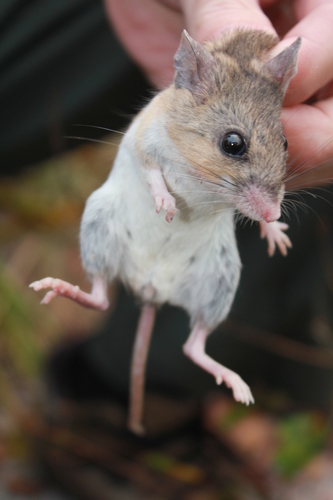
Florida Deermouse
The Florida mouse, Podomys floridanus, thrives in Florida's sandy scrub habitats. With its distinctive burrowing habits and symbiotic relationship with gopher tortoises, it plays a crucial role in its ecosystem. Its large ears and nocturnal lifestyle make it a unique, elusive inhabitant of the region's natural landscape.
24.95 - 49.019 g
Weight
Length: 18 - 20 cm
Size
Brown, Grey
Color
36-42 days
Age of Sexual Maturity
4 weeks
Age of Weaning
Near Threatened
Conservation Status
Decreasing
Population Trend
Characteristics
Podomys floridanus, known as the Florida mouse, is a small rodent native to the sandy uplands of central Florida. It has large ears, a long tail, and a pale brown coat with a white underbelly. This nocturnal creature is known for its burrow-digging behavior, often sharing burrows with gopher tortoises.
Distribution Range of the Florida Deermouse
Podomys floridanus, commonly known as the Florida mouse, is native to the southeastern United States, specifically in the state of Florida. Its distribution is predominantly in central and northern Florida, extending into the southern part of Georgia.
Florida Deermouse's Habitat
Environmental Conditions
The Florida mouse typically inhabits well-drained sandy soils found in xeric upland habitats such as sandhills, scrublands, and pine flatwoods. These areas are characterized by a warm, subtropical climate with distinct wet and dry seasons.
Ecological Niche
Podomys floridanus is adapted to environments with open canopies and sparse understory vegetation, which are common in fire-maintained ecosystems. The species is known for its burrowing behavior, often utilizing the burrows of the gopher tortoise (Gopherus polyphemus) for shelter. It plays a role in the ecosystem as both a seed disperser and a prey species for larger predators.
Copyright @ Nature Style Limited. All Rights Reserved.
 English
English